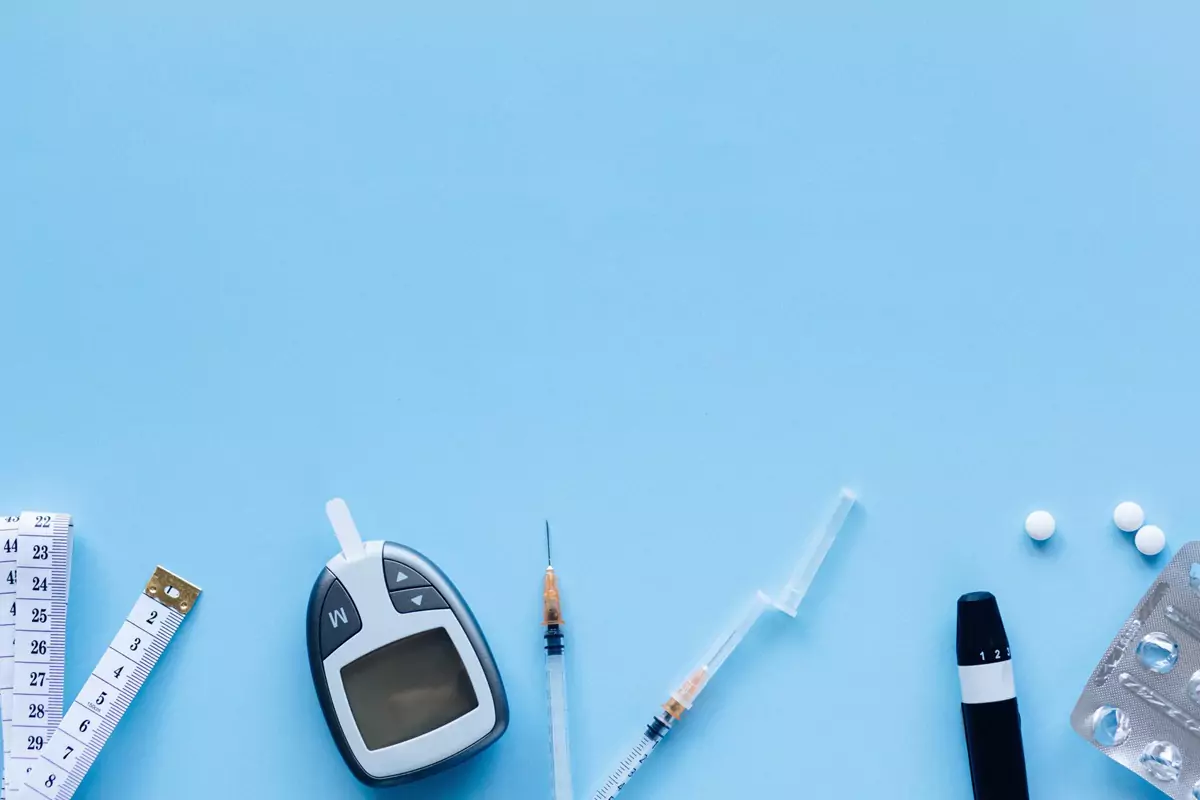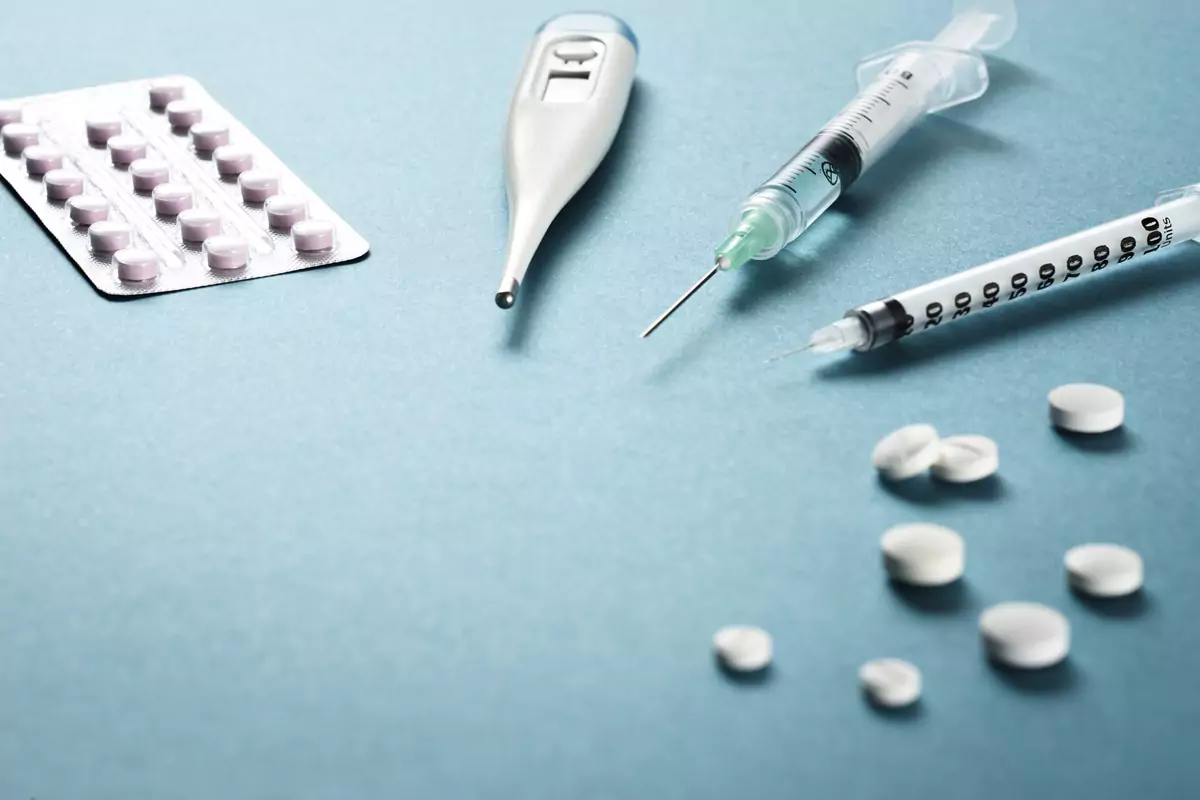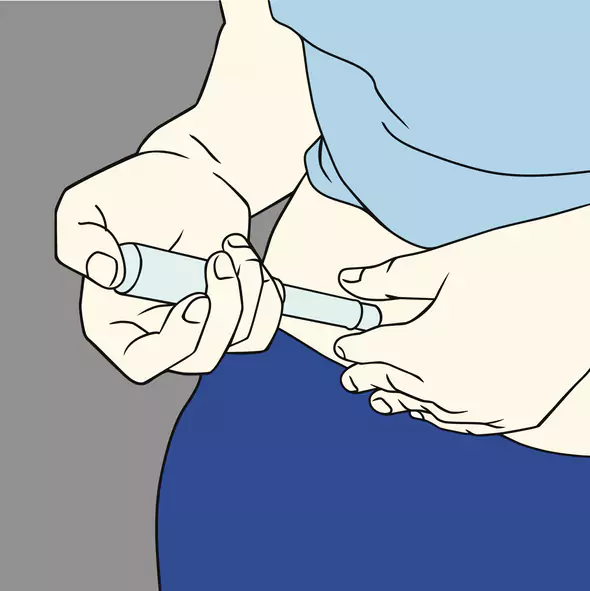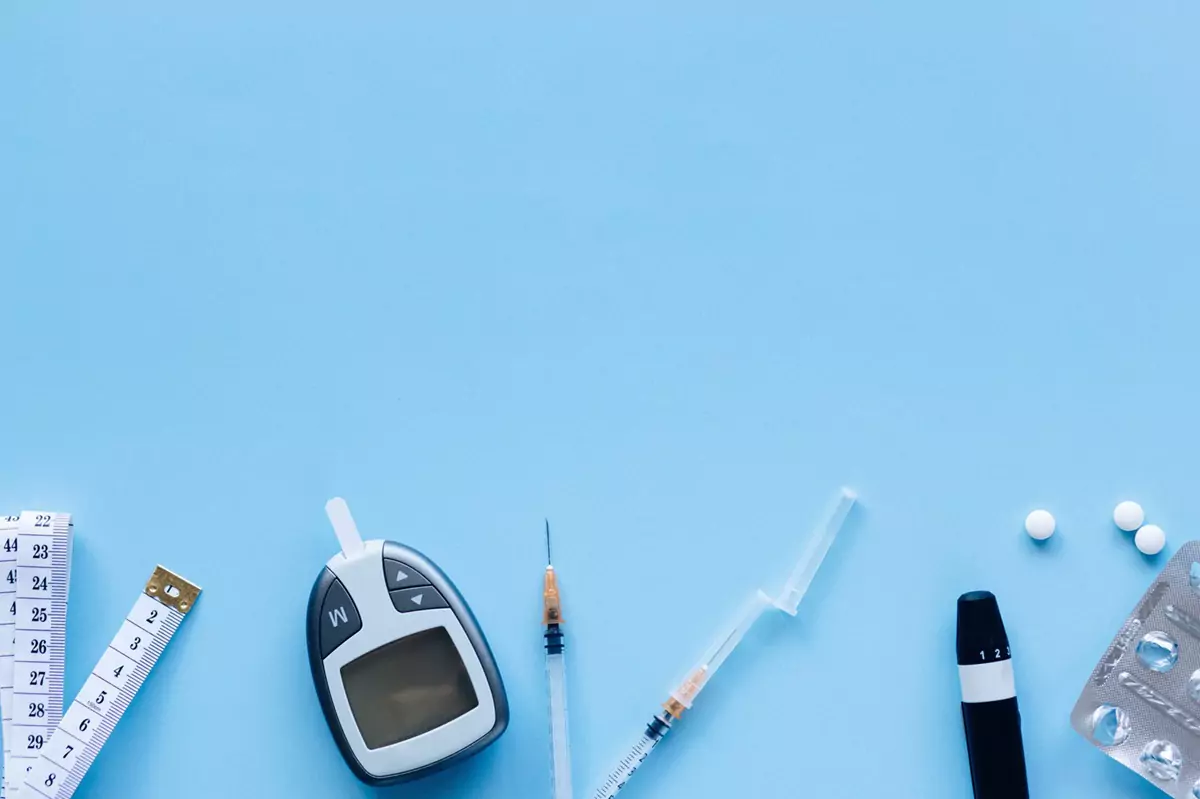





Tresiba Side Effects: What You Need to Know


Table of Contents
- What Are the Most Common Side Effects of Tresiba?
- Hypoglycemia
- Reaction at the Injection Site
- Common Cold
- Headache
- Nasopharyngitis
- Mild side effects of Tresiba
- Diarrhea
- Lipodystrophy
- Weight gain
- Hyperglycemia
- Peripheral Edema
- Serious side effects of Tresiba
- Severe Hypoglycemia
- Allergic Reaction
- Hypokalemia
- Frequently Asked Questions
- Tresiba and Weight loss - Are they connected?
- Tresiba and Fatigue - Are they connected?
- Tresiba and Hair loss - Are they connected?
- Tresiba and Burping - Are they connected?
- Tresiba and Joint Pain - Are they connected?
- Conclusion
- About The Author
Do you take Tresiba for your diabetes and are curious to know about its related side effects? Let’s talk about it in detail. Tresiba is an injectable medication used to manage Type 1 and Type 2 diabetes. It is actually a long-acting insulin medication used to treat adults and children with diabetes.
It is a type of insulin known as “basal insulin”, meaning it works slowly in the background over time, helping maintain stable blood sugar levels. Tresiba is effective in both type 1 and type 2 diabetes and can be used either alone or in combination with other diabetes medications.
Despite the convenience of Tresiba, it is important to be aware of potential side effects. Common side effects of Tresiba include low blood sugar levels, headache, nausea, stomach pain, and swelling in the hands, feet, or ankles. In rare cases, Tresiba can cause more serious side effects, such as severe hypoglycemia or hypokalemia. Now, let’s talk about each side effect in detail.
What Are the Most Common Side Effects of Tresiba?
While Tresiba has the potential to improve the lives of those living with diabetes, it also comes with a range of side effects. In this section, we will take a closer look at the most common side effects of Tresiba, including nasopharyngitis, headache, common cold, reactions at the injection site, and hypoglycemia. With this knowledge, diabetic champs can be better informed about the potential risks of this medication and make the best decision for their health.
Hypoglycemia
Hypoglycemia is one of the most common side effects associated with the use of Tresiba. Hypoglycemia occurs when the body does not have enough glucose in the bloodstream to fuel the body’s cells and organs. You may feel increased heart rate, dizziness, headache, shakiness, confusion, double-vision, and fatigue.
If not treated promptly, hypoglycemia can result in coma or even death. That is why it is important for you to be aware of hypoglycemia's signs and take steps to prevent it. Preventing hypoglycemia includes eating regular meals and snacks, avoiding drinking alcohol, and checking glucose levels regularly.
Additionally, monitoring your blood sugar levels and taking your insulin exactly as prescribed is important. If you experience any of the symptoms of hypoglycemia, contact your diabetic doctor right away.
Reaction at the Injection Site
One of the most common side effects of Tresiba is a reaction at the injection site. This may include redness, swelling, itching, or pain at the site of injection. These symptoms often appear immediately after injection and can last anywhere from a few minutes to a few days.
In rare cases, the injection site may become infected, which may require medical attention. To help prevent these adverse effects, you should follow the directions properly when taking Tresiba. Always clean and disinfect the injection site before each injection, and rotate the area where you inject to avoid putting too much strain on any area.
Common Cold
With taking Tresiba you may have a runny nose, nasal congestion, sneezing, sore throat, coughing, body aches, headache, and fatigue. Although cold symptoms may appear uncomfortable and bothersome, they are generally mild and do not require medical attention.
It is important to note that common cold symptoms are not the only side effect of taking Tresiba. Common cold symptoms do not always indicate an infection, but they may still be bothersome and persistent. If you experience any of the above symptoms after taking Tresiba, it is important to contact your doctor for a consultation.
Headache
Headache due to Tresiba is usually mild to moderate but can sometimes be severe. Additionally, it can vary in intensity, duration, and location. The exact cause of headaches caused by Tresiba is unknown, but it is believed to be a combination of factors, including changes in blood glucose levels, changes in insulin levels, and the body's reaction to the medication itself.
You can take a few steps to help reduce the risk of experiencing a headache after taking Tresiba. First, make sure you are checking your blood glucose levels regularly and following the instructions properly. If your levels are too high or too low, this can increase the risk of experiencing a headache.
Furthermore, properly managing your diabetes can help reduce the risk of experiencing a headache. Second, talk to your diabetes doctor about the possibility of reducing your dose of Tresiba. This can help reduce the chances of experiencing a headache, as the body may have a more difficult time adjusting to higher doses of the medicine.
Finally, drinking plenty of fluids can help keep your body hydrated, which can help reduce the risk of headaches. In general, headaches are not a cause for concern and usually go away independently.
Nasopharyngitis
Nasopharyngitis is an inflammation of the pharynx, or throat, and often leads to sore throat, sneezing, coughing, and other symptoms. It is a common side effect of Tresiba because insulin can irritate the pharynx and lead to inflammation. People with nasopharyngitis may also experience congestion since the hormone can cause the blood vessels in the nose and throat to swell.
Other symptoms of Tresiba-related nasopharyngitis can include post-nasal drip, chest discomfort, and wheezing. These symptoms can make performing activities such as speaking, eating, and breathing difficult. It is important to get prompt medical attention if you experience any of these symptoms.
Fortunately, there are ways to help manage the side effects of Tresiba. For instance, it is important to drink plenty of fluids, as this can help soothe the throat and reduce nasal congestion. Additionally, avoiding allergens and pollutants that can irritate the throat can be useful in helping reduce the symptoms.
Mild side effects of Tresiba
Let’s move on to some of the milder side effects of Tresiba, including weight gain, lipodystrophy, diarrhea, peripheral edema, and hyperglycemia. We will also discuss potential treatments and prevention techniques to help manage these side effects.
Diarrhea
One of the mild side effects of taking Tresiba is diarrhea. Diarrhea is the frequent passing of loose and watery stools and can be caused by a number of things, including certain medications. When taking Tresiba, diarrhea can be one of the mild side effects that an individual may experience.
Diarrhea may be accompanied by other symptoms, such as abdominal cramping, nausea, fatigue, and loss of appetite. But not everyone who takes Tresiba will experience diarrhea, and it is generally a mild and manageable side effect.
The best way to prevent diarrhea is to drink plenty of fluids and ensure that you eat a balanced and healthy diet. While diarrhea is a mild side effect of Tresiba, it can still be an uncomfortable experience. Make sure to talk to your doctor if you are experiencing this side effect, as they can provide you with advice on how to best manage it.
Lipodystrophy
One of the mild side effects of taking Tresiba is lipodystrophy, a condition affecting the body’s fat distribution. People with lipodystrophy often have areas of their body that lack fat, even though they may carry a normal body fat percentage. In cases of lipodystrophy, the fat is usually lost from the arms, legs, and buttocks.
This can cause the skin to look noticeably wrinkled or have an uneven texture. The loss of fat from the face will often lead to a rounder appearance, as the cheeks and eyes may look sunken in. While the exact cause of lipodystrophy is still unknown, experts believe that it may be due to a combination of genetics and environmental factors.
Those who take Tresiba may be more likely to develop lipodystrophy, as the drug is known to cause a change in fat distribution. If you develop lipodystrophy while taking Tresiba, adding or changing medications may help reduce the symptoms of lipodystrophy. Additionally, lifestyle changes, such as increasing physical activity, maintaining a healthy diet, and stress management, can also help reduce the risk of developing this condition.
Weight gain
When taking Tresiba, some people may experience weight gain due to an increase in appetite or fluid retention. This is caused by the insulin degludec in the medication, which can cause an increase in hunger and satiety signals. Additionally, it can cause the body to retain more water than usual, leading to a temporary increase in body weight.
It is recommended to maintain a healthy calorie balance while taking Tresiba, as this can help limit weight gain. Eating a balanced diet with plenty of vegetables, fruits, and other nutrient-rich foods can help you to maintain a healthy weight. Regular physical activity is also an important part of managing any weight gain.
Hyperglycemia
We earlier discussed hypoglycemia. In contrast to hypoglycemia, hyperglycemia is a condition in which the body has too much glucose, or sugar, in the blood. If not treated over time, it can lead to serious health complications like eye, kidney, cardiovascular, and nerve damage.
This happens when someone with diabetes takes too little Tresiba, eats too much food, or does not exercise enough. Signs and symptoms of hyperglycemia vary but can include frequent urination, extreme thirst, fatigue, weight loss, blurry vision, and yeast infections.
In order to avoid developing hyperglycemia, it is important to closely follow instructions regarding your dosage and monitor your blood sugar levels regularly. I will also encourage you to keep a log of your blood sugar levels, or you can simply download our SuagrMD app, which makes it easy for you to record everything. Additionally, exercising regularly and eating a balanced diet are important to keep your blood sugar levels within a healthy range.
Peripheral Edema
Peripheral edema, also known as fluid retention, is a condition where the body retains too much fluid in the lower extremities, such as the feet, ankles, and legs. Patients may experience swelling, aching sensations, or increased fullness in these areas. With Tresiba, it is usually mild and transient.
In most cases, it can be managed with lifestyle modifications, such as elevating the legs or wearing compression socks. In rare cases, peripheral edema may be a sign of a more serious complication, such as congestive heart failure or kidney failure.
Therefore, it is important that patients using Tresiba are aware of the potential for this side effect and take action if they experience any swelling or discomfort. In addition, those with kidney disease should talk to their doctor before starting Tresiba, as it may worsen kidney function.
The doctor will monitor the patient’s kidney function while they are taking Tresiba and may adjust the dosage as needed. Overall, peripheral edema is a mild and transient side effect of Tresiba that can usually be managed with lifestyle modifications. However, patients should be aware of the potential for this side effect.
Serious side effects of Tresiba
So far, we have discussed common and mild side effects of Tresiba. Now we will move on to the severe ones, including severe hypoglycemia, hypokalemia, and allergic reaction, so you can manage your diabetes better.
Severe Hypoglycemia
One of the most serious side effects of Tresiba is severe hypoglycemia or very low blood sugar. Severe hypoglycemia can lead to symptoms such as dizziness, slurred speech, confusion, seizures, loss of consciousness, and coma. It is very important to understand the signs and symptoms of hypoglycemia and what to do to prevent and treat it.
Low blood sugar can occur when taking Tresiba, especially with a poor diet or when you skip meal, as it is a long-acting insulin that can cause a slower release of insulin. Being aware of the signs and symptoms of severe hypoglycemia can help you take immediate action to prevent or treat it.
In some cases, severe hypoglycemia can be life-threatening and requires immediate medical attention. If unconscious or having a seizure, it is important to call emergency services right away. It is also important to be aware of other factors that can increase the risk of severe hypoglycemia with Tresiba.
These include exercising without eating carbohydrates or having too few carbohydrates after exercising, drinking alcohol without eating carbohydrates, having an infection, and taking certain other medications.
If you experience any of the signs or symptoms of hypoglycemia, it is important to check your blood sugar more frequently than is usually needed. Taking measures to prevent and treat low blood sugar can help reduce the risk of serious complications.
Allergic Reaction
Patients using Tresiba are at risk for allergic reactions just as any other type of medication. While the chances of experiencing a serious allergic reaction to Tresiba are low, it is still important to be aware of the risk. Symptoms of an allergic reaction can range from mild to life-threatening and can occur anywhere from a few hours to days after taking the medication.
The most common signs of an allergic reaction to Tresiba are skin rash or hives, swelling of the lips and tongue, and difficulty breathing. In severe cases, anaphylaxis can occur, which often involves symptoms such as severe swelling, itching, and difficulty breathing. If any of these symptoms appear after taking Tresiba, it is important to seek medical attention immediately.
Hypokalemia
One of the potentially serious side effects of Tresiba is hypokalemia (low levels of potassium). Hypokalemia can occur when the body does not have enough potassium or when the body does not maintain a proper balance of potassium and other electrolytes.
Symptoms of hypokalemia include muscle weakness, stomach pains, constipation, and abnormal heart rhythms. If your potassium levels become too low, you may be advised to take a supplement or make dietary changes to improve your potassium levels.
Tresiba dosage can be lowered, too, or suggest other treatments for hypokalemia, such as higher doses of potassium chloride or potassium gluconate. It is important to understand the potential side effects of Tresiba and take measures to ensure that your electrolyte levels remain balanced.
Frequently Asked Questions
Let’s answer some of the commonly asked questions about Tresiba's side effects.
Tresiba and Weight loss - Are they connected?
Tresiba has not been associated with any weight-loss-related side effects. While using Tresiba, keeping an eye on your weight and blood sugar levels is critical. The dosage of Tresiba should be adjusted if you gain or lose weight. This change in dosage can prevent your blood sugar levels from changing dramatically.
Tresiba and Fatigue - Are they connected?
Fatigue is defined as a feeling of extreme tiredness or lack of energy. It can be caused by a variety of factors, including medications, medical conditions, and lifestyle choices. Therefore, it is important to determine the underlying cause of the fatigue when attempting to address this symptom.
This is especially true with Tresiba, as fatigue has been reported as a side effect in some people taking this medication. When it comes to Tresiba and fatigue, research suggests that the fatigue may be due to hypoglycemia, a condition caused by low blood glucose levels.
People taking Tresiba have an increased risk of experiencing hypoglycemia because of its long duration of action. In addition to hypoglycemia, other possible causes of fatigue in people taking Tresiba include insulin resistance, dehydration, and low energy levels due to inadequate nutrition.
All of these factors can contribute to fatigue and may need to be addressed to reduce fatigue symptoms. In conclusion, fatigue is a potential side effect of taking Tresiba and may be caused by hypoglycemia or other factors. It is important to speak with your doctor if you experience fatigue while taking Tresiba to identify and appropriately manage the underlying cause.
Tresiba and Hair loss - Are they connected?
Hair loss is not a reported side effect of Tresiba, and there is currently no published evidence to suggest a correlation between the two. Tresiba itself is not directly responsible for hair loss; however, it is important to keep in mind that there can be wider complications associated with using this insulin.
It is possible that the effects of other diabetes medications can lead to hair loss, either directly or indirectly. For instance, if impaired glucose tolerance is present and diabetes is not kept in check, the body’s inability to use glucose properly can lead to an imbalance in hormones.
This hormonal imbalance can disrupt the normal growth pattern of hair follicles, leading to hair loss. Additionally, uncontrolled diabetes can lead to poor blood circulation, which can also contribute to hair loss due to the lack of nutrients and oxygen that the hair follicles receive. Therefore, monitoring your glucose levels regularly and maintaining a healthy lifestyle is important, as this can help reduce the likelihood of developing any unwanted side effects.
Tresiba and Burping - Are they connected?
People taking Tresiba have experienced burping. It can be a relative symptom of indigestion. While it might be annoying, it is usually a harmless sign that the drug is working.
However, in some cases, burping can be a sign of something more serious like gastritis, a condition in which the stomach lining becomes inflamed. Gastritis can cause a variety of symptoms, including pain, vomiting, and difficulty digesting food.
Tresiba and Joint Pain - Are they connected?
A person experiencing joint pain as a side effect of Tresiba should always consult with their doctor to determine the cause. In some cases, the pain may be a result of a more serious underlying medical condition and not necessarily related to the drug.
If a person finds that the pain is related to Tresiba, there are a few potential relief methods. For example, individuals can take a break from the medication, reduce their dosage, or use an over-the-counter joint pain relief medication after talking to the doctor.
Conclusion
In conclusion, it is important to be aware of the potential side effects of Tresiba before deciding to begin taking the medication. While these side effects are generally mild, they can be serious and need to be attended to. It is always a good idea to consult a doctor if any of the side effects become concerning or serious.
Additionally, it is important to note that Tresiba is not necessarily connected with weight loss, fatigue, hair loss, burping, or joint pain. To get the most out of the medication, follow the doctor’s advice and ask any questions you may have. Tresiba can be an effective medication for many individuals with the proper precautions and care.
About The Author
Who is Dr. Ergin? Dr. Ahmet Ergin is an endocrinologist interested in and passionate about diabetes care. Dr. Ergin earned his medical degree with honors at Marmara University School of Medicine in Istanbul, Turkey.
Then, he completed his internal medicine residency and endocrinology fellowship at Cleveland Clinic in Cleveland, Ohio. He is a board-certified Internal Medicine and Endocrinology, diabetes, and metabolism physician. He is also a certified diabetes education specialist.
Disclaimer: Any information on diseases and treatments on this website is for general guidance only and must never be a substitute for the advice your doctor or other qualified healthcare professional provides. Always seek the advice of your physician or other qualified healthcare professional’s advice with questions regarding your medical condition.
Written By Dr. Ahmet Ergin
462 total articles
Meet Dr. Ahmet Ergin, a highly skilled and dedicated endocrinologist with a passion for diabetes care. Dr. Ergin earned his medical degree with honors from Marmara University in Istanbul. He completed internal medicine residency and endocrinology fellowship at Cleveland Clinic. Dr. Ergin is board-certified in Internal Medicine, Endocrinology, Diabetes, and Metabolism due to his vast medical expertise. He's a certified diabetes educator, author of “The Ultimate Diabetes Book,” and founder of “the SugarMD YouTube channel.” Dr. Ergin offers exceptional diabetes care to his patients in Port Saint Lucie, FL, helping them manage effectively. For a closer look into his insights and experiences, connect with Dr. Ahmet Ergin on LinkedIn, Instagram, and YouTube.”
Disclaimer: These statements have not been evaluated by the Food and Drug Administration. Information on this website isn't intended to treat, cure or prevent any disease. Discuss with your doctor and do not self-treat.
Products















